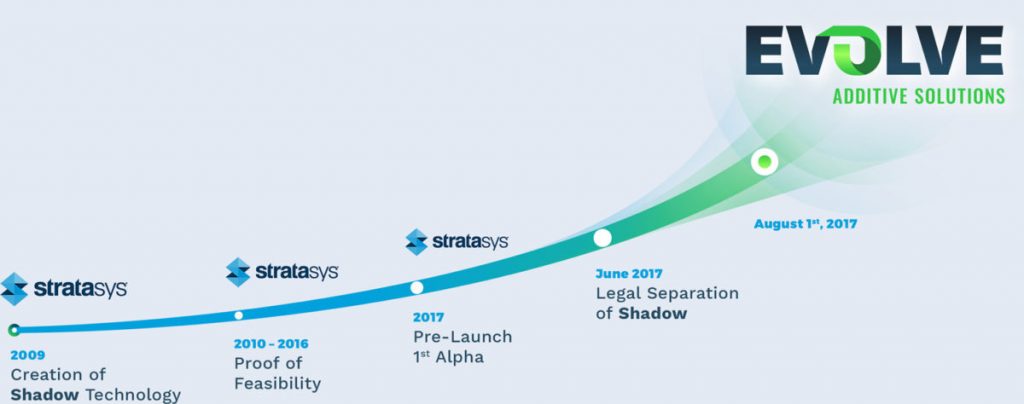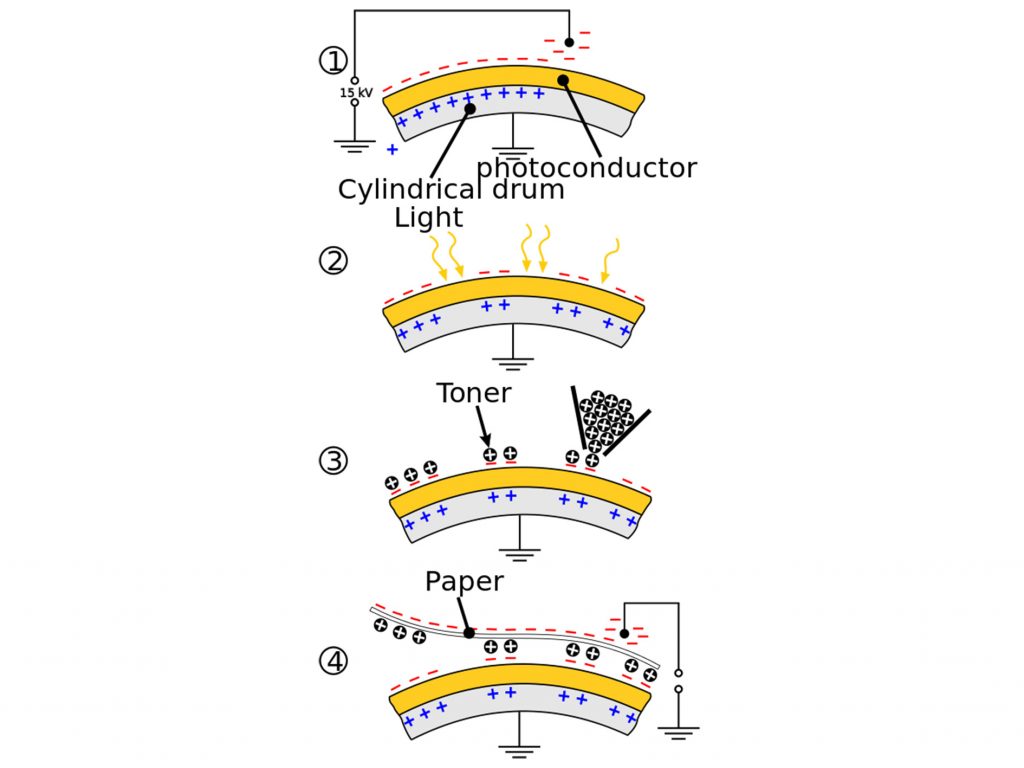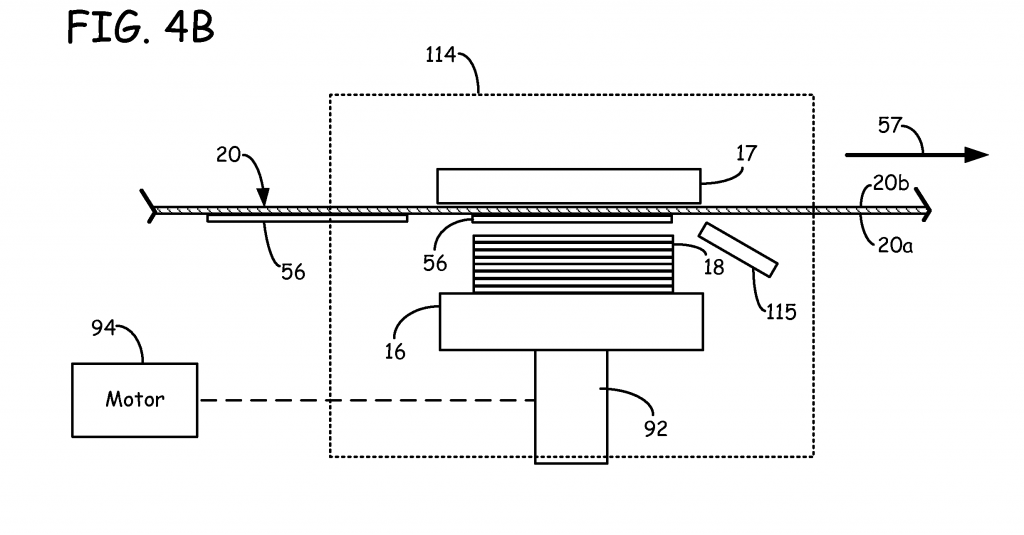Evolve Additive Solutions, a wholly owned subsidiary of Stratasys, is on the brink of unveiling a new, high-speed plastics 3D printing process. Reportedly up to “50 times faster than the next fastest AM plastics technology” the so-termed electrophotography-based additive manufacturing (EPSD) process has been in development since 2009.

Using photocopier intelligence
Evolve Additive’s technique is based on the proprietary technology behind most photocopiers and laser printers that was invented in 1938.
In 2D printing, electrophotography (also known as xerography), is the process of affixing an image to a substrate, i.e. paper, using a static-electric charge.
The method uses a negatively charged drum that reacts to light due to a photoconductive coating. In the first step of the process, the image to-be-copied, i.e. a document, is exposed to the drum using a bright light. The white areas of the document reflect onto the surface of the drum and diminish its charge, whereas the parts of the drum corresponding to the non-reflective black areas stay negatively charged.
When toner is added, it sticks to the negatively charged parts of the drum, and is then transferred onto a sheet of paper.
In the final step, toner is permanently bonded to the paper using heat and pressure rollers.

In the EPSD process, Evolve Additive Solutions harness similar principles to its two-dimensional ancestor, except to create objects layer by layer.
From paper to polymer
The paper in 2D electrophotography is essentially representative of a single layer of a 3D printed object. With Evolve Additive Solution’s technology, each slice of an object is exposed as an image onto to a powder-based photoconductive insulator material.
In the initial exposure stage, according to a Stratasys patent for the process, a substrate is “configured to receive latent-charged images of the sliced layers of 3D part (or negative images), and to attract charged particles of the part material to the charged or discharged image areas, thereby creating the layers of 3D part.”
The layers are added to the substrate via transfer belt – which is key to the expediency of the process, as it can hold multiple objects at one time. The semi-curing that takes place on the transfer belt also reduces the water content of the material (and resulting residual stress). In the next layer, particles are fully fused via heat and/or pressure.

40 layers per minute
To date, Evolve Additive Solutions has 100 granted and pending patents in place for EPSD technology, including one for Systems and methods for electrophotography-based additive manufacturing of parts and another for Engineering-grade consumable materials for electrophotography-based additive manufacturing system.
In such patents the inventors state that the disclosed “additive manufacturing system is configured to print the three-dimensional part at a rate of at least about 40 layers per minute.”
The company’s CEO Steve Chillscyzn, is listed as co-invetor of the technology, alongside Arun Chowdry who is the company’s VP of Technology and Materials. Chillscyzn’s job history sees him as the previous VP of Corporate Technology Development at Stratasys, whereas Chowdry’s experience includes 30+ years in technological commercialization with the likes of Kodak. Scott Crump, the co-founder of Stratasys, sits on Evolve’s board of directors.
In addition to electrophotography patents, Chillscyzn and Stratasys have also patented a process for continuous liquid interface production (CLIP) as used in Carbon DLP 3D printers. In particular, the IP protects a CLIP system with a viscosity pump “which allows larger sized parts and/or denser parts to be built in a layer-by-layer manner.”
Looking for your next move in the industry? Register on our 3D printing jobs site here.
Featured image shows a schematic of Evolve Additive Solutions’ electrophotography-based additive manufacturing system. Image via US patent 8488994 B2



